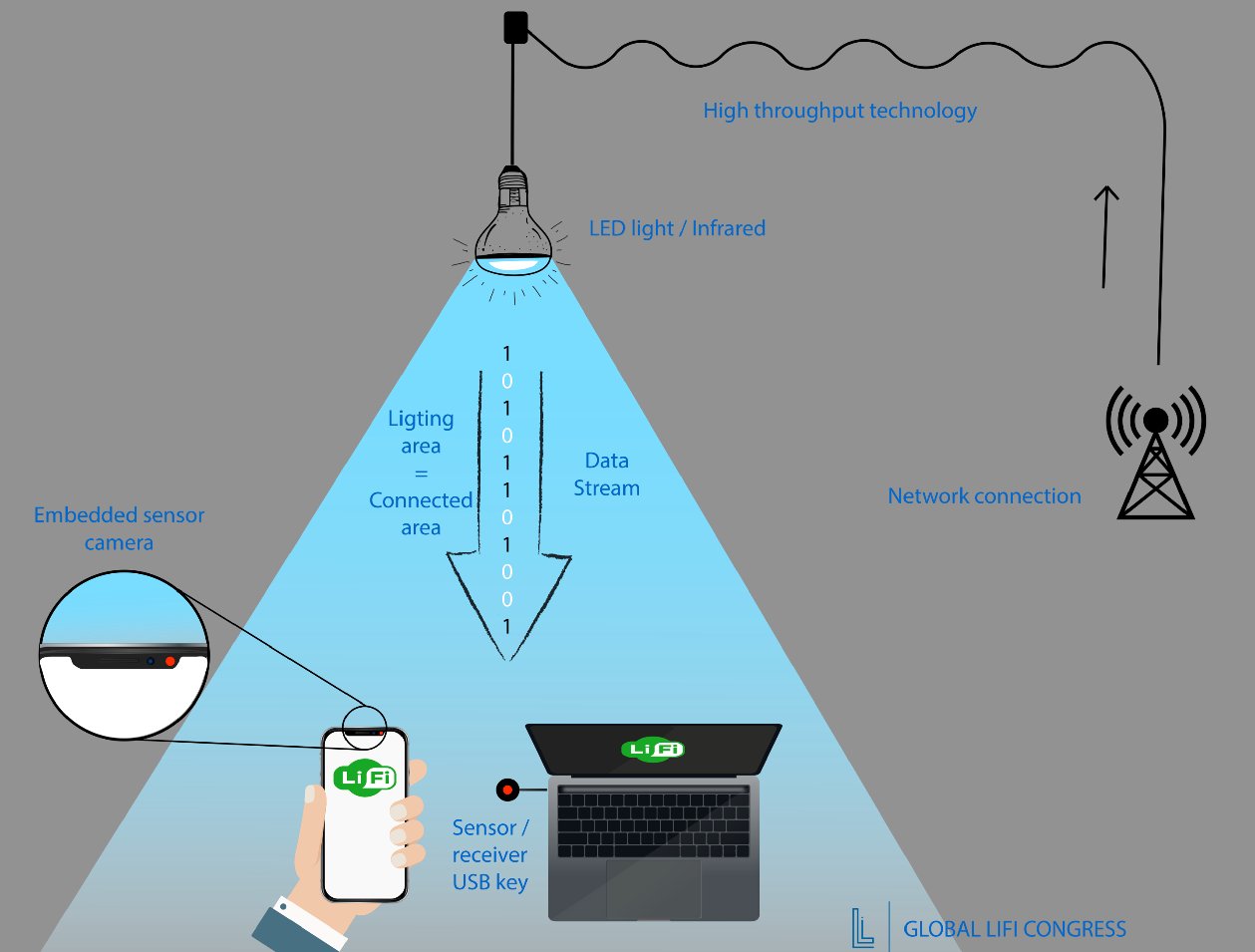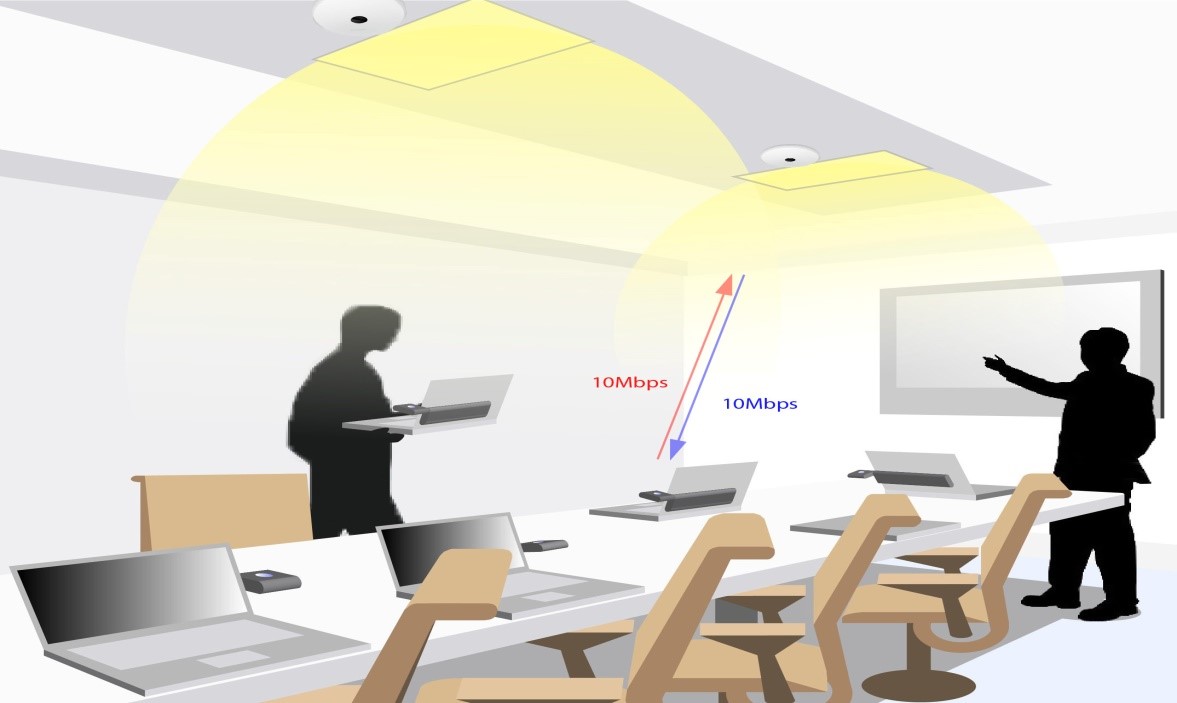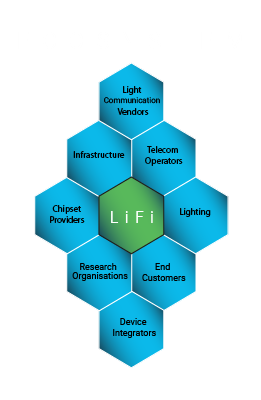Li-Fi Technology
Submitted by Shuvam Dutta(Department of BCA,Batch : 2017-2020)
University Roll No : 15201217030
Introduction: Li-Fi is wireless communication technology, which utilizes light to transmit data and position between devices. The term was first introduced by Harald Haas during a 2011. In technical terms, Li-Fi is a light communication system that is capable of transmitting data at high speeds over the visible light, ultraviolet, and infrared spectrums. In its present state, only LED lamps can be used for the transmission of visible light . The technology is similar to Wi-Fi - the key technical difference being that Wi-Fi uses radio frequency to transmit data. Using light to transmit data allows Li-Fi to offer several advantages, most notably a wider bandwidth channel, the ability to safely function in areas otherwise susceptible to electromagnetic interference (e.g. aircraft cabins, hospitals, military), and offering higher transmission speeds. The technology is actively being developed by several organizations across the globe .

How the Li-Fi technology works ?
Li-Fi is a VLC (visible light communications) system and the speed of this system is very high. Li-Fi uses normal LEDs to allow the data to transfer and increase the speed up to 224 Gigabits/sec. The data transmission of this technology can be done via illumination. The essential devices of this system are the bright light emitting diodes. The ON/Off activity of LEDs permits a type of data transmission in the form of binary codes but the human eye cannot recognize this transform & the bulbs appear with a stable intensity.
When a constant current is applied to an LED (LED lamps are commonly found in households and offices nowadays), tiny packets of energy (called photons) are released, which we perceive as visible light. If the input current to the LED is varied slightly, the intensity of the light output also varies. However, the good thing is that such small variations in the intensity of light is imperceptible by human eyes. Since LEDs are semiconductor devices, the current and the optical output (the light produced by LEDs) can be modulated at very high speeds, which is then detected by a photo detector device that converts it back to electric current.
In this way, Li-Fi technology uses light from LED lights to transmit data and provide much faster Internet connectivity.

Since we are already largely dependent on visible light from lamps and bulbs, Li-Fi presents many unprecedented advantages for its uptake and use, as far as wireless Internet connectivity is concerned.
Lights are almost everywhere you go – in your room, in halls and auditoriums, in cafes…. it’s impossible to make a complete list of places where you can easily find a source of light. If this new trend catches on, then where there’s light, there will be Internet connectivity through Li-Fi. As mentioned above, Li-Fi relies on visible light to communicate, which is a good thing in more ways than one. These waves are able to carry far more information than the traditional radio waves used in Wi-Fi technology.
The visible light spectrum is almost 10,000 times larger than the spectrum occupied by radio waves. Also, Li-Fi is said to increase bandwidth by 100 times what we have today with Wi-Fi. This incredible feat is only possible because a Li-Fi connection can transmit data at the rate of 224 gigabytes per second.
Li-Fi is also more suitable in electromagnetic-sensitive areas like hospitals, airplane cabins, and nuclear power plants (where electromagnetic disturbance can be disastrous).

Advantages of Li-Fi :
- Speed:Li-Fi provides speeds around 100 times faster than currently achievable speeds in Wi-Fi. Faster communication would result in better service quality and better communication.
- Efficiency:Li-Fi is much more efficient when it comes to cost and power consumption. Since it makes use of LED bulbs for communication, these bulbs can double up as regular lighting for a household reducing power consumption of a Li-Fi network and making it far efficient than existing technologies alongside not requiring any additional hardware for implementation would reduce the cost of setting up Li-Fi.
- Availability:Due to the use of LED bulbs, Li-Fi can be made available everywhere by replacing traditional LED bulbs with Li-Fi compatible bulbs.
- Security:Since Li-Fi makes use of visible light spectrum, it cannot penetrate through optically opaque objects like walls making it difficult for unauthorised access unlike present Wi-Fi which could be accessed from beyond walls and making it vulnerable to unauthorised access.
Disadvantage of Li-Fi :
- Limited Range:The range of Li-Fi is limited by two major factors: Dispersion of light and inability of light to penetrate optically opaque objects (like walls of a room).
- Li-Fi would be rather useless in conditions where there is no light. That means no Internet while lying in your bed at night. If you have a Wi-Fi router installed in one room of your house, you can connect your devices sitting anywhere in the house, but this is not the case with Li-Fi. Since visible rays cannot pass through walls, you have to be in the immediate vicinity of the source of light to access the Internet on your device, which may not sound particularly convenient to many people.
Li-Fi Technology Applications :
- Communication Underwater
- Elegant Lighting
- Aircraft
- hospitals
- military
- Industrial Areas
Conclusion :
A bright, safer, faster and more efficient solution to optimize our connection with the world .It is the beginning of a new fastest connection world , the end of Wi-Fi technology.
Further research on Li-Fi is gaining pace in the recent times which will potentially resolve the many unsolved mysteries of the world.
